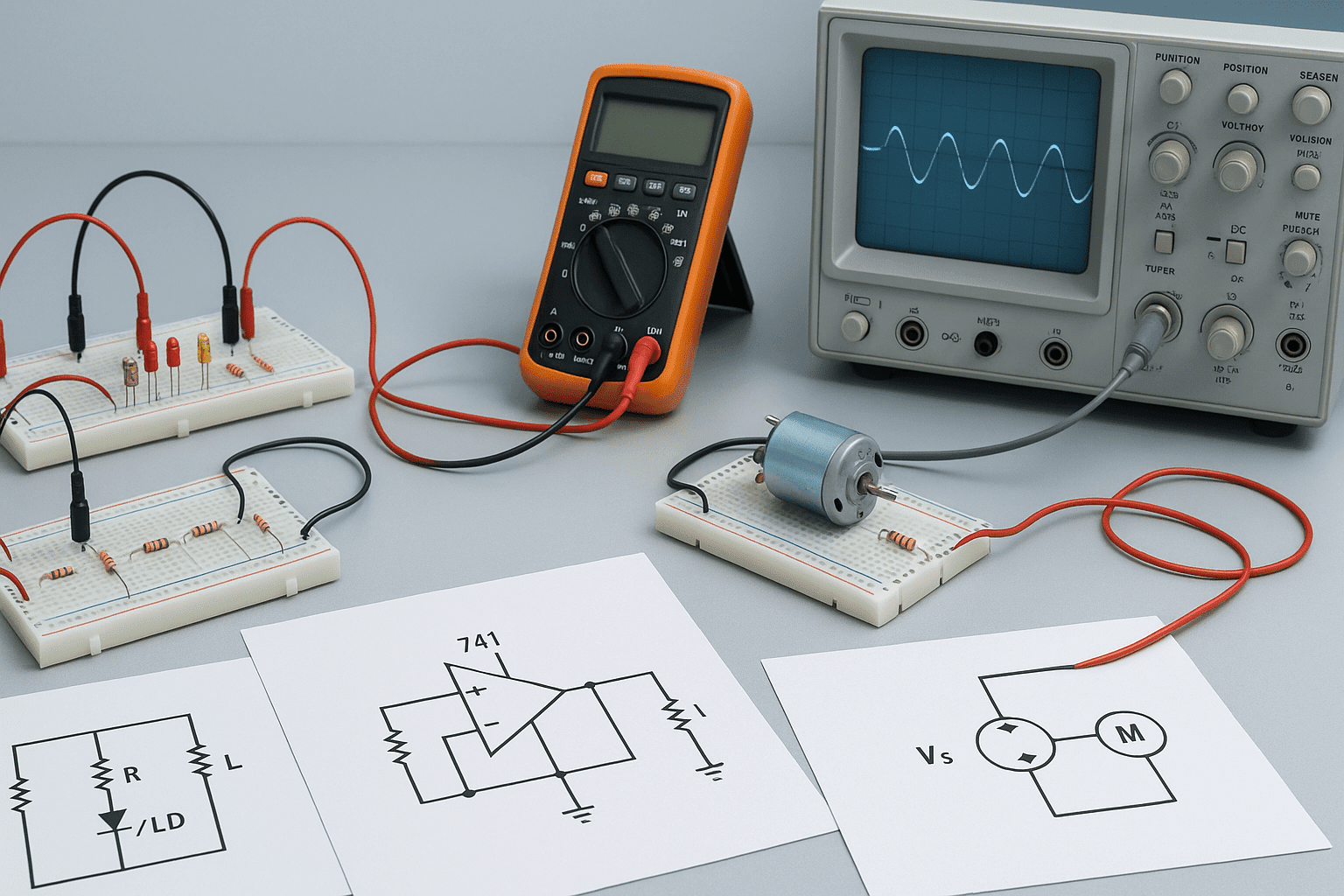Course Features
Price
Study Method
Online | Self-paced
Course Format
Reading Material - PDF, article
Duration
5 hours, 15 minutes
Qualification
No formal qualification
Certificate
At completion
Additional info
Coming soon
- Share
Overview
The Fundamentals of Draughtsmanship course provides a structured and comprehensive introduction to the art and science of technical drawing. Learners begin with a clear understanding of what draughtsmanship entails, including its historical development and its wide-ranging applications across industries. From the earliest hand-drawn schematics to today’s precise digital designs, draughtsmanship remains a cornerstone of visual communication in technical fields.
The course delves into the essential draughting tools and equipment, teaching students how to use, maintain, and care for these instruments to ensure accuracy and professionalism in their work. Drawing boards, various types of paper, and traditional tools like compasses, set squares, and scales are introduced, along with their specific roles in creating clean and effective technical drawings.
Key concepts such as orthographic and isometric projections are thoroughly explored, giving learners the skills to represent three-dimensional objects in two-dimensional views. Students will gain hands-on knowledge of how to create plan, elevation, and sectional views using first and third angle projection methods. These projection techniques form the basis for technical communication in industries such as architecture, engineering, and product design.
Further modules focus on the practical aspects of line types, dimensioning methods, and lettering styles, all of which are critical for producing standardized and readable technical drawings. Students also learn how to create working and assembly drawings while following industry conventions and drawing standards.
The course concludes by exploring real-world applications of draughtsmanship in fields such as engineering, architecture, and graphic design. It also examines future trends and the evolving role of draughtsmanship in the digital age, including its transition into CAD and 3D modelling. By the end of this course, learners will have a strong grasp of both the theoretical and practical components of draughtsmanship and a clear understanding of potential career paths.
Who is this course for?
The Fundamentals of Draughtsmanship course provides a structured and comprehensive introduction to the art and science of technical drawing. Learners begin with a clear understanding of what draughtsmanship entails, including its historical development and its wide-ranging applications across industries. From the earliest hand-drawn schematics to today’s precise digital designs, draughtsmanship remains a cornerstone of visual communication in technical fields.
The course delves into the essential draughting tools and equipment, teaching students how to use, maintain, and care for these instruments to ensure accuracy and professionalism in their work. Drawing boards, various types of paper, and traditional tools like compasses, set squares, and scales are introduced, along with their specific roles in creating clean and effective technical drawings.
Key concepts such as orthographic and isometric projections are thoroughly explored, giving learners the skills to represent three-dimensional objects in two-dimensional views. Students will gain hands-on knowledge of how to create plan, elevation, and sectional views using first and third angle projection methods. These projection techniques form the basis for technical communication in industries such as architecture, engineering, and product design.
Further modules focus on the practical aspects of line types, dimensioning methods, and lettering styles, all of which are critical for producing standardized and readable technical drawings. Students also learn how to create working and assembly drawings while following industry conventions and drawing standards.
The course concludes by exploring real-world applications of draughtsmanship in fields such as engineering, architecture, and graphic design. It also examines future trends and the evolving role of draughtsmanship in the digital age, including its transition into CAD and 3D modelling. By the end of this course, learners will have a strong grasp of both the theoretical and practical components of draughtsmanship and a clear understanding of potential career paths.
Requirements
The Fundamentals of Draughtsmanship course provides a structured and comprehensive introduction to the art and science of technical drawing. Learners begin with a clear understanding of what draughtsmanship entails, including its historical development and its wide-ranging applications across industries. From the earliest hand-drawn schematics to today’s precise digital designs, draughtsmanship remains a cornerstone of visual communication in technical fields.
The course delves into the essential draughting tools and equipment, teaching students how to use, maintain, and care for these instruments to ensure accuracy and professionalism in their work. Drawing boards, various types of paper, and traditional tools like compasses, set squares, and scales are introduced, along with their specific roles in creating clean and effective technical drawings.
Key concepts such as orthographic and isometric projections are thoroughly explored, giving learners the skills to represent three-dimensional objects in two-dimensional views. Students will gain hands-on knowledge of how to create plan, elevation, and sectional views using first and third angle projection methods. These projection techniques form the basis for technical communication in industries such as architecture, engineering, and product design.
Further modules focus on the practical aspects of line types, dimensioning methods, and lettering styles, all of which are critical for producing standardized and readable technical drawings. Students also learn how to create working and assembly drawings while following industry conventions and drawing standards.
The course concludes by exploring real-world applications of draughtsmanship in fields such as engineering, architecture, and graphic design. It also examines future trends and the evolving role of draughtsmanship in the digital age, including its transition into CAD and 3D modelling. By the end of this course, learners will have a strong grasp of both the theoretical and practical components of draughtsmanship and a clear understanding of potential career paths.
Career path
The Fundamentals of Draughtsmanship course provides a structured and comprehensive introduction to the art and science of technical drawing. Learners begin with a clear understanding of what draughtsmanship entails, including its historical development and its wide-ranging applications across industries. From the earliest hand-drawn schematics to today’s precise digital designs, draughtsmanship remains a cornerstone of visual communication in technical fields.
The course delves into the essential draughting tools and equipment, teaching students how to use, maintain, and care for these instruments to ensure accuracy and professionalism in their work. Drawing boards, various types of paper, and traditional tools like compasses, set squares, and scales are introduced, along with their specific roles in creating clean and effective technical drawings.
Key concepts such as orthographic and isometric projections are thoroughly explored, giving learners the skills to represent three-dimensional objects in two-dimensional views. Students will gain hands-on knowledge of how to create plan, elevation, and sectional views using first and third angle projection methods. These projection techniques form the basis for technical communication in industries such as architecture, engineering, and product design.
Further modules focus on the practical aspects of line types, dimensioning methods, and lettering styles, all of which are critical for producing standardized and readable technical drawings. Students also learn how to create working and assembly drawings while following industry conventions and drawing standards.
The course concludes by exploring real-world applications of draughtsmanship in fields such as engineering, architecture, and graphic design. It also examines future trends and the evolving role of draughtsmanship in the digital age, including its transition into CAD and 3D modelling. By the end of this course, learners will have a strong grasp of both the theoretical and practical components of draughtsmanship and a clear understanding of potential career paths.
-
- Definition and Overview of Draughtsmanship 00:10:00
- Importance and Applications of Draughtsmanship 00:10:00
- Historical Development of Draughtsmanship 00:10:00
-
- Types of Draughting Tools 00:10:00
- Care and Maintenance of Draughting Tools 00:10:00
- Drawing Boards and their Uses 00:10:00
- Drawing Paper Types and Size 00:10:00
- Definition and Concept of Orthographic Projection 00:10:00
- Principles of First and Third Angle Projection 00:10:00
- Views of an Object: Plan, Elevation, and Sectional Views 00:10:00
- Types of Lines and their Uses 00:10:00
- Dimensioning Principles and Techniques 00:10:00
- Lettering Styles and Guidelines 00:10:00
- Engineering and Manufacturing 00:10:00
- Architecture and Construction 00:10:00
- Graphic Design and Art 00:10:00
- Exam of Fundamentals of Draughtsmanship 00:50:00

No Reviews found for this course.
Is this certificate recognized?
Yes, our premium certificate and transcript are widely recognized and accepted by embassies worldwide, particularly by the UK embassy. This adds credibility to your qualification and enhances its value for professional and academic purposes.
I am a beginner. Is this course suitable for me?
Yes, this course is designed for learners of all levels, including beginners. The content is structured to provide step-by-step guidance, ensuring that even those with no prior experience can follow along and gain valuable knowledge.
I am a professional. Is this course suitable for me?
Yes, professionals will also benefit from this course. It covers advanced concepts, practical applications, and industry insights that can help enhance existing skills and knowledge. Whether you are looking to refine your expertise or expand your qualifications, this course provides valuable learning.
Does this course have an expiry date?
No, you have lifetime access to the course. Once enrolled, you can revisit the materials at any time as long as the course remains available. Additionally, we regularly update our content to ensure it stays relevant and up to date.
How do I claim my free certificate?
I trust you’re in good health. Your free certificate can be located in the Achievement section. The option to purchase a CPD certificate is available but entirely optional, and you may choose to skip it. Please be aware that it’s crucial to click the “Complete” button to ensure the certificate is generated, as this process is entirely automated.
Does this course have assessments and assignments?
Yes, the course includes both assessments and assignments. Your final marks will be determined by a combination of 20% from assignments and 80% from assessments. These evaluations are designed to test your understanding and ensure you have grasped the key concepts effectively.
Is this course accredited?
We are a recognized course provider with CPD, UKRLP, and AOHT membership. The logos of these accreditation bodies will be featured on your premium certificate and transcript, ensuring credibility and professional recognition.
Will I receive a certificate upon completion?
Yes, you will receive a free digital certificate automatically once you complete the course. If you would like a premium CPD-accredited certificate, either in digital or physical format, you can upgrade for a small fee.
Course Features
Price
Study Method
Online | Self-paced
Course Format
Reading Material - PDF, article
Duration
5 hours, 15 minutes
Qualification
No formal qualification
Certificate
At completion
Additional info
Coming soon
- Share
Creative Thinking and Innovation
Course Line237£490.00Original price was: £490.00.£14.99Current price is: £14.99.Language Level 3 Advanced Diploma
Course Line237£490.00Original price was: £490.00.£14.99Current price is: £14.99.Practical Approach to Learn BEEE (Basic Electrical and Electronics Engineering)
Kazi Shofi Uddin Bablu237£490.00Original price was: £490.00.£14.99Current price is: £14.99.





